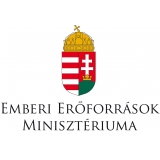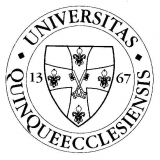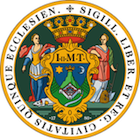Main Sponsors
-
 Reiso Pécs
Reiso Pécs -
 Hotel Lycium****
Hotel Lycium**** -
 Pécs ZOO
Pécs ZOO -
 http://www.mecsekegyesulet.hu/
http://www.mecsekegyesulet.hu/ -
Doro Ékszer
-
 Hetényi Pincészet
Hetényi Pincészet -
 Zsályaliget Élménypark
Zsályaliget Élménypark -
 Fabrik Barkács Szaküzlet
Fabrik Barkács Szaküzlet -
 Katica tanya
Katica tanya -
 E.ON Hungary
E.ON Hungary -
 http://www.ipark-pecs.hu/
http://www.ipark-pecs.hu/ -
 https://www.otpbank.hu/otpklub/Fooldal
https://www.otpbank.hu/otpklub/Fooldal -
 http://www.pecsibalett.hu/hindex.html
http://www.pecsibalett.hu/hindex.html -
 www.lakics.hu
www.lakics.hu -
 Gépszer
Gépszer -
 http://www.kormany.hu/hu/emberi-eroforrasok-miniszteriuma
http://www.kormany.hu/hu/emberi-eroforrasok-miniszteriuma -
 http://www.pnsz.hu/
http://www.pnsz.hu/ -
 http://www.pecs.hu/
http://www.pecs.hu/ -
 Mischl Autóház
Mischl Autóház -
 Öko-Trade Ltd
Öko-Trade Ltd -
 Bóly and Vicinity Savings Bank
Bóly and Vicinity Savings Bank -
 Mecsekerdő Forestry Ltd
Mecsekerdő Forestry Ltd -
 http://www.deltakarek.hu/
http://www.deltakarek.hu/ -
 University of Pécs
University of Pécs -
 http://kloe.hu/
http://kloe.hu/ -
 http://www.lafarge.hu/
http://www.lafarge.hu/ -
 http://www.gondoldo.hu/
http://www.gondoldo.hu/


Kristóf Baráti and Olari Elts
19 Apr 2012. 19:30 | Kodály Centre
Breitner Season ticket 2011/2012 |
Orchestra
Pannon Philharmonic OrchestraConductor

Olari Elts
Soloist

Kristóf Baráti
violin
Kristóf Baráti was born in 1979 in Budapest, from a family of musicians; his first violin teacher was his mother. 1981-1991 he lived, with his parents, in Venezuela; he gave his first concert with orchestra at the age of eight,… More
About the Programme
Program:
- Brahms: Tragic Overture
- Shostakovich: Violin Concerto No.1
- Brahms: Symphony No.1 in C minor
A great many music fans were waiting for a symphony by the young Johannes Brahms. The composer felt half paralyzed by the great ancestor, Beethoven's legacy. After waiting 22 years, finally, sounded up the Symphony No.1 in C minor (Op. 68), evaluated by every expectant as a masterpiece. In one of the themes of the finale, one could recognise the melody of Beethoven’s Ode to Joy (the author's comment: "Every asses can see that all!").
In the early 1880s, Brahms, like putting on theatre masks, created two pieces: “one is crying, the other one is laughing” – as he described them. The Tragic Overture became the Academic Festival Overture’s melancholic pair; contradicting to its title, it is not followed by any other programme and does not have any content beside music.
Dmitri Shostakovich dedicated his Violin Concerto No.1 (in A minor, Op 99) to David Oistrack. The concerto’s opening Nocturne is followed by a demonic Scherzo. The slow movement, which ends in one of the longest cadence of the repertoire, is homage to the Baroque era’s Passacaglia. The 4th movement is a whirlwind-like Burlesque. The piece tries the soloist’s technical skills and stamina to the end. Oistrack called the violin solo a Shakespearean role.
























































































